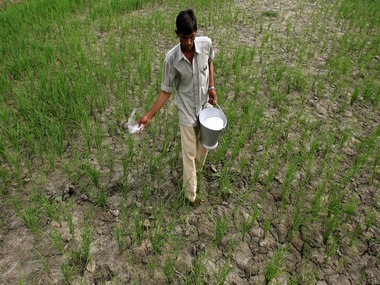After diesel and cooking gas, the Narendra Modi government is reported to be drawing up a blueprint to decontrol urea, the most important fertiliser used in Indian farming, accounting for around 55 percent of the total consumption. While diesel was deregulated last October, cooking gas (LPG) could happen soon after the Delhi elections are over as the government is already pushing through the direct cash transfers (DCT) scheme for the payment of subsidies. Currently, 12 subsidised cylinders are offered to each consumer annually, and the subsidy money for each cylinder is supposed to flow into consumer bank accounts directly before each purchase. Once all LPG consumers are linked to bank accounts (a round 50 percent of the consumers are currently), LPG will be deregulated fully and the actual prices will be determined by the oil companies and competition. The PM said the other day that some eight crore LPG consumers are now covered by the cash transfer scheme; the balance should happen by 1 April. Urea, according to a report in The Indian Express today (19 January) is next on Modi’s to-do list. The report says that the plan is to raise fertiliser prices in stages over three years, free up imports, and pay farmers the subsidy directly into their Aadhaar-enabled bank accounts. This is why the Jan Dhan Yojana for inclusive banking is such a big deal. Alongside, there are also plans to pool the prices of feedstock. Reason: some fertiliser companies get cheap gas and the others expensive imported liquefied natural gas, making the latter uncompetitive. By pooling prices, it is hoped that all fertiliser companies get a reasonably level playing field. The idea of deregulation is good, but if it is going to be attempted in this prolonged and convoluted way, it is going to flop. For many, many reasons. First, urea is the most politically sensitive product after food as it affects farmers, and half the country is dependent on farming. If you announce a three-year rollout plan, rest assured that every political party will take up the issue and kill the idea even before it has a chance to fly. [caption id=“attachment_487297” align=“alignleft” width=“380”]  Reuters[/caption] Second, a three-year phaseout of regulated prices means the second and third phases will come bang in the midst of assembly elections to crucial states such as West Bengal, Tamil Nadu and Uttar Pradesh, where the BJP hopes to do well. It is unlikely Modi will want to hold a reform plan hostage to electoral compulsions. Three, if farmers know that prices are going to be raised by 10-15 percent with every major crop (kharif, rabi), there will be huge spikes and hoarding at every stage before an expected price rise. This will cause unnecessary market distortions and disquiet in the rural areas when fertiliser becomes periodically scarce. The big farmers with staying power will hoard fertiliser, and small farmers will pay a premium over the controlled prices much of the time. Four, feedstock price pooling is not a good idea, except as an interim measure. If the idea is deregulation, pooling is the exact opposite of deregulation. Why deregulate urea and keep its feedstock regulated through pooling? It is not logical. While it is clear that high-cost fertiliser plants may become unviable, the logical thing would be to give them some kind of one-time capital subsidy to modernise and become lower cost. The only logical way to deregulate is to do it quickly and as politically painlessly as possible. One way to do it would be go the whole hog in one shot. This is what could be attempted. #1: Urea prices must be raised to market levels and the increased cost to farmers should be simultaneously compensated through an appropriate increase in the minimum support prices (MSPs) for cereals. The subsidy on fertiliser can then be shifted to food to pay for increased payments of farmers. The fertiliser subsidy outlay is around Rs 73,000 crore this year – enough to cover higher food subsidies. #2: A part of the increased cost of higher food subsidies should be compensated through an increase in ration shop prices, and a hike in prices under the Food Security Act. This is what needs to be phased over two- to three years, not urea prices. #3: The direct cash transfers scheme should be extended to food subsidies in stages. If, as is estimated, the leakages in the public distribution system are as high as 30-40 percent, an Aadhaar-linked direct cash transfer, as in the case of LPG subsidies, will help reduce the food subsidy costs by at least 25 percent over time. #4: The ultimate aim should be to scrap the guaranteed MSP system and replace it with a mix of several ideas: fixed-price procurement only for buffer-stocking purposes; annual cash compensation for farmland that becomes unviable due to lower food prices in some years; more corporatised farming for ensuring economies of scale in food production, enabled by land pooling or land sales; and higher investment in rural infrastructure and smart cities in the hinterland so that farmers who find farming unviable can find employment in non-farm activities. There is a long chain of things to do when you liberalise and deregulate any product. Given the possibility of political opposition at every stage, Modi should reconsider the idea of reform in homoeopathic doses. It’s best if what needs to be done is done quickly and as painlessly as possible. Agriculture Minister Radha Mohan Singh should recommend one-shot deregulation.
The NDA government is working on a plan for the gradual phaseout of urea price controls. But an extended phaseout will be politically tougher than a quick one-shot affair. The government should do it quickly.
Advertisement
End of Article
Written by R Jagannathan
R Jagannathan is the Editor-in-Chief of Firstpost. see more


)

)
)
)
)
)
)
)
)



